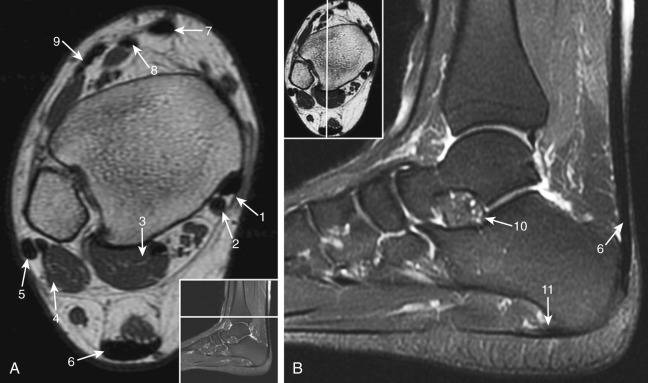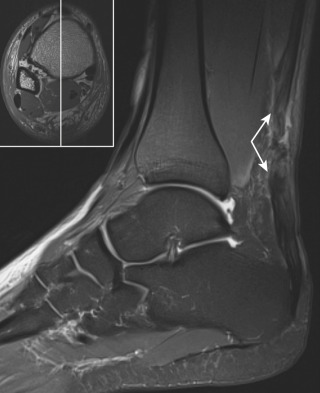Physical Address
304 North Cardinal St.
Dorchester Center, MA 02124
The ankle joint contains four compartments: Anterior, medial, lateral, and posterior.
Anterior compartment: From medial to lateral, the anterior compartment contains the anterior t ibialis tendon, extensor h allucis longus tendon, peroneal nerve, dorsalis pedis artery, and extensor d igitorum longus tendon. The tendons in the anterior compartment can be remembered by using the mnemonic “ T om h ates D ick.”
Medial compartment: From medial to lateral, the medial compartment contains the posterior t ibialis tendon, flexor d igitorum longus tendon, posterior tibial a rtery, posterior tibial v ein, posterior tibial n erve, and flexor h allucis longus tendon. The structures in the medial compartment can be remembered by using the mnemonic “ T om, D ick, a nd v ery n ervous H arry.”
Lateral compartment: It contains the peroneal longus and peroneal brevis tendons. The peroneus b revis tendon abuts the b one.
Posterior compartment: It contains the Achilles tendon.
Please see Figure 57-1 for some normal ankle anatomy on MRI.

The hindfoot is composed of the calcaneus and talus.
The midfoot is composed of the navicular, cuboid, and three cuneiforms (medial, middle, and lateral).
The forefoot is composed of the metatarsals and phalanges (proximal, middle, and distal).
Tendinopathy: This refers to degeneration of a tendon, which typically results from overuse. The affected tendon will be intermediate to high in signal intensity on T2 weighted images but not as high in signal intensity as with a tendon tear.
Partial tear: This appears as a linear hyperintense defect within the tendon on T2 weighted images. The signal abnormality is typically very bright, similar to that of fluid.
Complete tear: This results in discontinuity of the affected tendon. There is often associated retraction of the torn ends of the tendon.
Paratenonitis: The Achilles tendon does not have a tendon sheath. Instead, it is surrounded by loose connective tissue, which can become inflamed. This condition is referred to as paratenonitis and can be seen as edema in the soft tissue surrounding the tendon. This is often manifested as edema within Kager's fat pad, also known as the pre-Achilles fat pad.
Tenosynovitis: This refers to an inflammatory process of the tendon sheath. The affected tendon will demonstrate fluid that completely surrounds the circumference of the tendon.
Achilles tendon ruptures are commonly seen following sports-related injuries and most frequently seen in men between the ages of 30 and 50. Patients usually report a “pop” during forceful dorsiflexion. On MRI, sagittal images are the most helpful to make this diagnosis. The tendon tear usually occurs in the hypovascular watershed region located 2 to 6 cm proximal to the calcaneal insertion ( Figure 57-2 ). In addition to discontinuity of tendon fibers, a large amount of surrounding edema is typically present in the acute setting. Any gap between the proximal and distal ends of the tendon should be noted because this will impact surgical management.

The lateral ankle ligaments are injured during ankle inversion. The lateral ankle ligaments are composed of the anterior talofibular ligament, calcaneofibular ligament, and posterior talofibular ligament. The anterior talofibular ligament is the first ligament to tear during ankle inversion and is therefore the most commonly injured ligament. A more severe ankle inversion will next result in a calcaneofibular ligament tear followed by a posterior talofibular ligament tear, although injury involving all three ligaments is rare.
Become a Clinical Tree membership for Full access and enjoy Unlimited articles
If you are a member. Log in here